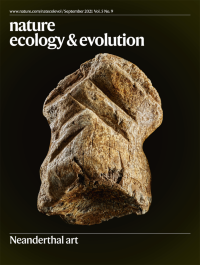Ver ítem
- xmlui.general.dspace_homeCentros Regionales y EEAsCentro Regional Patagonia SurEEA Santa CruzArtículos científicosxmlui.ArtifactBrowser.ItemViewer.trail
- Inicio
- Centros Regionales y EEAs
- Centro Regional Patagonia Sur
- EEA Santa Cruz
- Artículos científicos
- Ver ítem
Drivers of seedling establishment success in dryland restoration efforts.
Resumen
Restoration of degraded drylands is urgently needed to mitigate climate change, reverse desertification and secure livelihoods for the two billion people who live in these areas. Bold global targets have been set for dryland restoration to restore millions of hectares of degraded land. These targets have been questioned as overly ambitious, but without a global evaluation of successes and failures it is impossible to gauge feasibility. Here we examine
[ver mas...]
Restoration of degraded drylands is urgently needed to mitigate climate change, reverse desertification and secure livelihoods for the two billion people who live in these areas. Bold global targets have been set for dryland restoration to restore millions of hectares of degraded land. These targets have been questioned as overly ambitious, but without a global evaluation of successes and failures it is impossible to gauge feasibility. Here we examine restoration seeding outcomes across 174 sites on six continents, encompassing 594,065 observations of 671 plant species. Our findings suggest reasons for optimism. Seeding had a positive impact on species presence: in almost a third of all treatments, 100% of species seeded were growing at first monitoring. However, dryland restoration is risky: 17% of projects failed, with no establishment of any seeded species, and consistent declines were found in seeded species as projects matured. Across projects, higher seeding rates and larger seed sizes resulted in a greater probability of recruitment, with further influences on species success including site aridity, taxonomic identity and species life form. Our findings suggest that investigations examining these predictive factors will yield more effective and informed restoration decision-making.
[Cerrar]

Autor
Shackelford, Nancy;
Paterno, Gustavo B.;
Winkler, Daniel E.;
Erickson, Todd E.;
Leger, Elizabeth A.;
Svejcar, Lauren N.;
Breed , Martin F.;
Faist, Akasha M.;
Harrison, Peter A.;
Curran, Michael F.;
Peri, Pablo Luis;
Suding, Katharine L.;
Fuente
Nature Ecology & Evolution 5 (9) : 1283-1290. (2021)
Fecha
2021-09
Editorial
Springer Nature
ISSN
2397-334X (online)
Formato
pdf
Tipo de documento
artículo
Palabras Claves
Derechos de acceso
Restringido
 Excepto donde se diga explicitamente, este item se publica bajo la siguiente descripción: Creative Commons Attribution-NonCommercial-ShareAlike 2.5 Unported (CC BY-NC-SA 2.5)
Excepto donde se diga explicitamente, este item se publica bajo la siguiente descripción: Creative Commons Attribution-NonCommercial-ShareAlike 2.5 Unported (CC BY-NC-SA 2.5)

